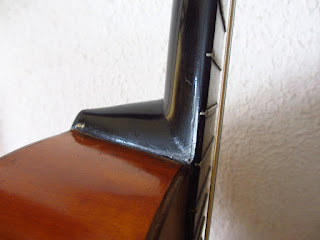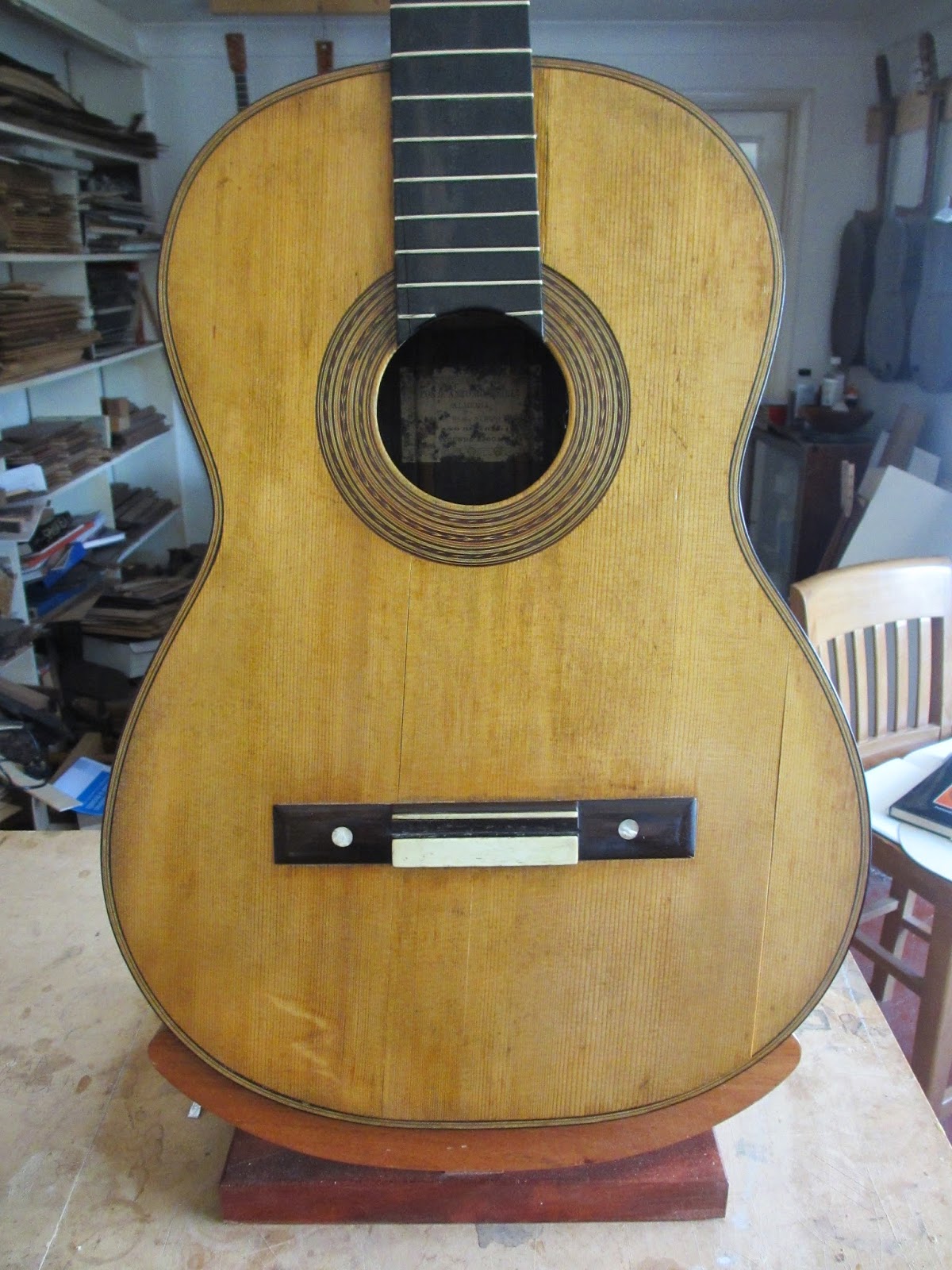A fine rosette by Miles Henderson-Smith. mileshendersonsmith.com
In the past, the old Spanish guitar makers would leave their hot and dusty workshops, throw some guitars over the back of a donkey, and head off to market to sell their wares. It's still a bit like that today to be honest, except for the bit about the donkey. I've recently got back from the Royal Greenwich Guitar Festival where I was exhibiting a guitar. Guitar exhibitions are hard work; you have to have a guitar ready to exhibit, you have to drag yourself away from the workshop for a couple of days and you have to lug yourself and your guitar to the venue. In fact, a donkey could well come in handy.
I have to say that this festival was one of the friendliest and most stimulating guitar events I've been to in a long time. Run by Graham Anthony Devine at Trinity Laban Conservatoire of Music, this festival has been going from strength to strength. Three days of concerts, master classes and lessons set against the dramatic backdrop of the Old Royal Naval College. Tutors and performers included John Mills, Carlo Marchione, Fiona Harrison, Charles Ramirez, Cobie Smit, Tim Pells and Graham Antony Devine.
The Guitar Makers Expo was a new addition this year, and a welcome one as makers always like to show their work and hear their guitars being played. That interaction with players is crucial to luthiers, and the feedback we get from players of all levels helps us produce better instruments. There were some fine makers exhibiting this year and it was a pleasure to meet them and admire their work. I love talking about guitars, discussing ideas and experiences and for me this was an inspirational part of the 3 days.
I would like to add a special thank you to Jonathan Parkin who is currently finishing his Masters at Trinity with Graham Devine. Jonathan demonstrated all the guitars in a short performance at the end of the festival; not an easy thing to do on unfamiliar instruments. He did it superbly.
I have included a picture of each maker's work. The pictures were taken in less than ideal lighting conditions so please take time to visit their websites to see better pictures and more information.
A guitar by Argyll-based maker Pete Beer with spectacular cocobolo back and sides www.petebeerguitars.com
Shaun Newman with his guitar with paduak back and sides. shaunnewmanguitars.co.uk
James Lister displayed this maple and spruce guitar with a distinctive leaf-patterned rosette. jameslisterguitars.co.uk/
This striking rosette is the work of Jose Marques.
Toon Lauwers made the trip over from Belgium with this elegant rosewood guitar. www.toonlauwers.be
Johan Sarens was showing this fine sounding guitar with its sophisticated rosette.
Stuart Christie had 2 guitars with him. This one included purflings made from holly cut from Stuart's garden. www.stuartchristieguitars.co.uk
Sam McClaren had this lovely looking and sounding Madagascan Rosewood guitar on display. www.mcclarenguitars.co.uk






































